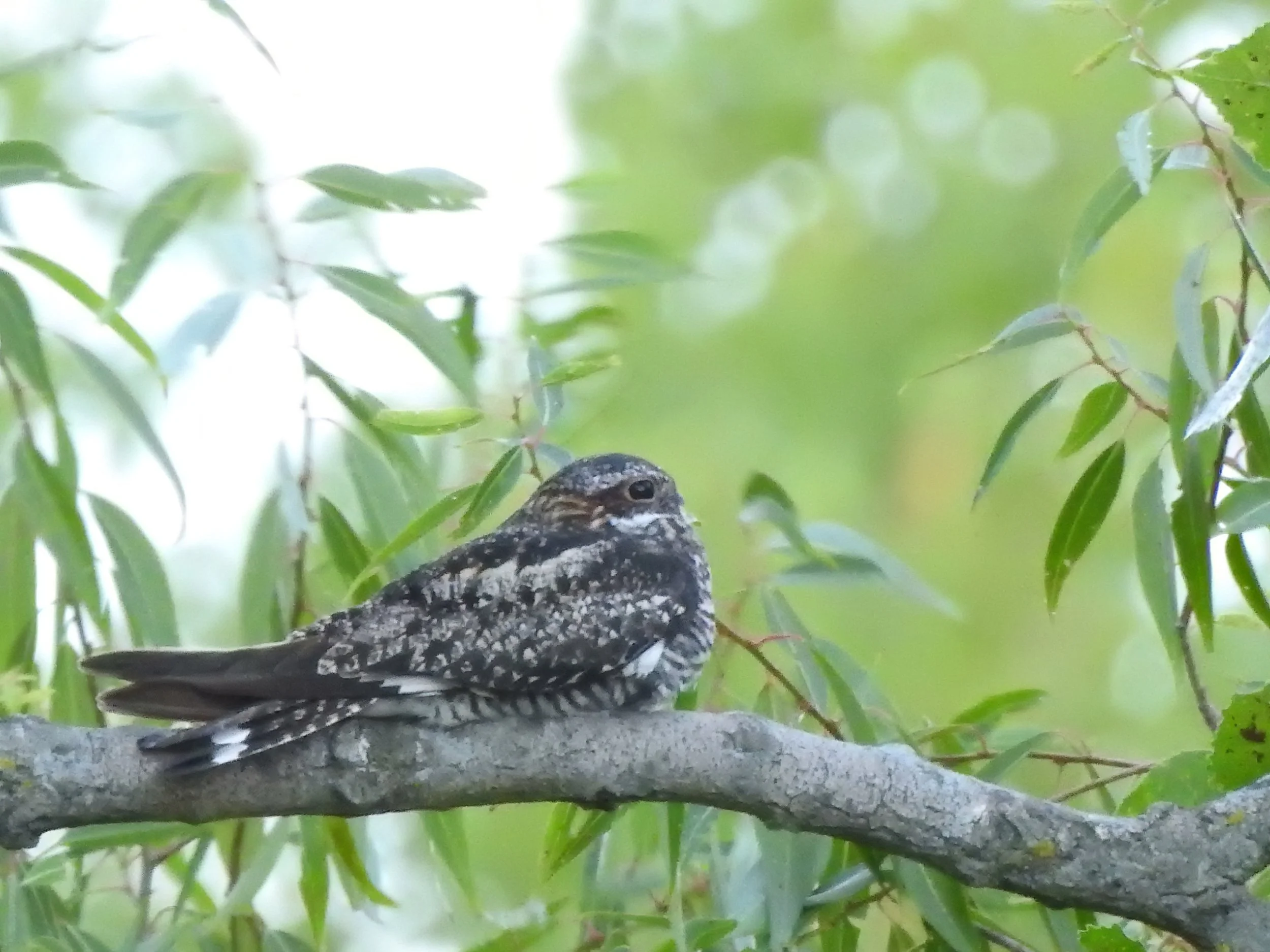Results of the 2025 Nighthawk Monitoring Season
August 31, 2019. Photo by Ian Sarmiento.
by Kris Hansen
Growing up, we had a house with a flat, gravel-covered roof. The roof was edged with a three-foot-high solid railing and had a small deck. My family and I would sit up there at night, listening to Common Nighthawks call and whir just over our heads, keeping us safe from mosquitos.
Magically, a pair of nighthawks would nest on the roof every summer, in plain sight from the deck. First there were gray speckled eggs that looked surprisingly like gravel. Then there were a pair of downy light-gray chicks who peeped and stumbled over the stones, finding shade along the railing. Once they were youngsters, they fledged through the storm-drainage gaps in the railing, to our delight. I have loved nighthawks ever since.
The Chicago Ornithological Society’s members love nighthawks, too. A total of 47 people submitted checklists for the COS Common Nighthawk monitoring program this summer, up 24% from the previous year. The volunteers monitored 197 sites across Chicagoland this year, up from 129 locations last year, and made a total of 526 site visits, nearly twice as many as in 2024. Nighthawks were seen at 68 of the locations, up from 49 in 2024.
All told, the volunteers saw 188 nighthawks, an increase of 54% from the 122 seen in 2024. The program just wrapped its fourth year.
“I’m super thrilled about the tremendous growth and interest in the nighthawk monitoring program,” says Edward Warden, project lead and COS president. “People have been coming out of the woodwork, sharing their support and their observations as we learn more about what nighthawks seek in successful nesting sites.”
For the second year, Mason Fidino, quantitative ecologist with the Lincoln Park Zoo’s Urban Wildlife Institute, is analyzing the data collected. The zoo is now fully invested as a partner and a graduate student may join the team in the fall to do Geographic Information System (GIS) analysis.
While more data is needed to confidently draw conclusions, some trends are beginning to emerge. The goal is to identify prime nighthawk habitat and then work to conserve it.
“There appears to be a sweet spot between too little tree cover and too many trees,” Warden said. Likewise, nighthawks appear to prefer a middle ground between dense and sparse housing and the amount of impervious ground cover, whether asphalt or grass. (Common Nighthawks often nest on flat, gravel-covered roofs.)
COS will begin recruiting next year’s volunteers next February and March for the fifth season of monitoring, running from June through August. Keep an eye on the COS newsletter if you want to participate!

